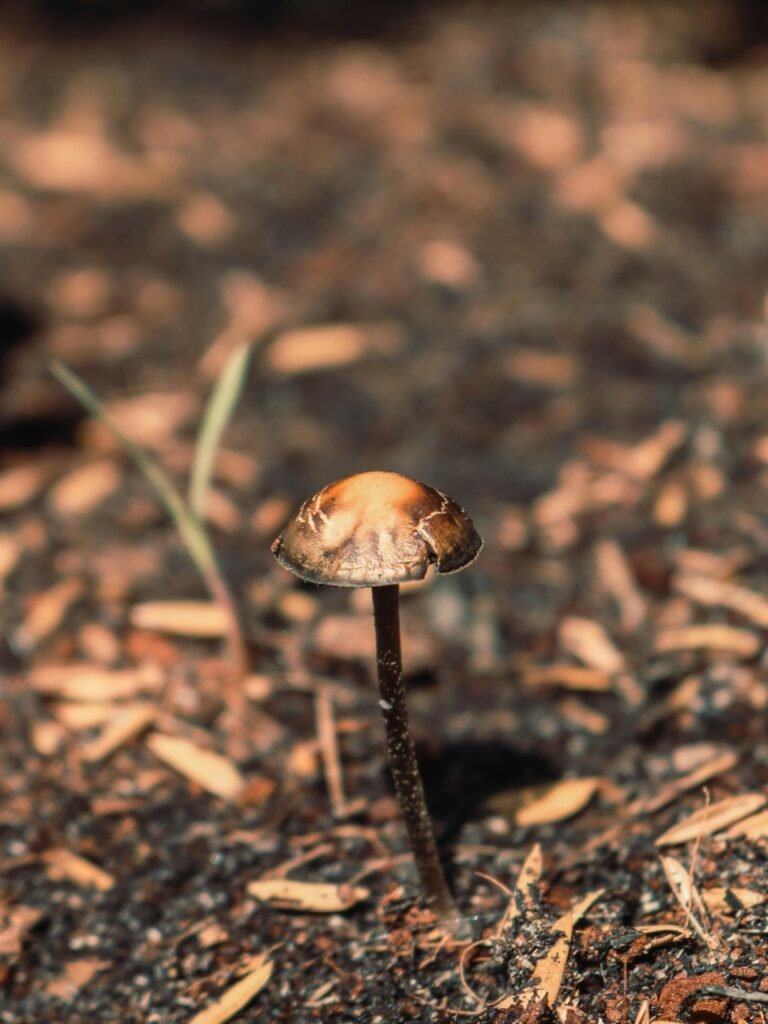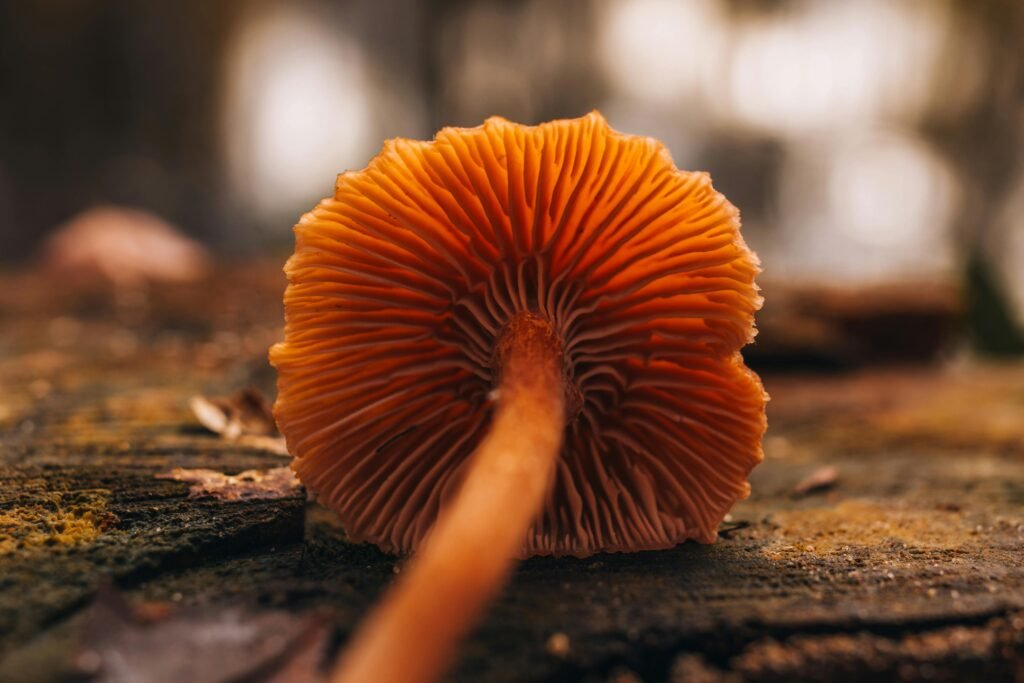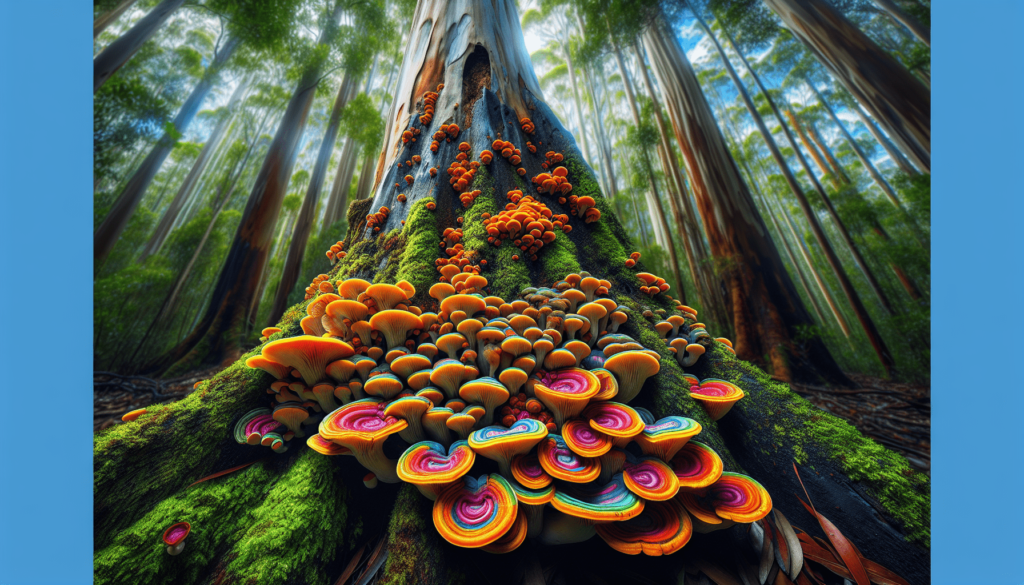Welcome to “Unveiling The Fungal Wonders Of Australia’s Eucalypt Forests,” where you’ll journey through the enchanting and fertile landscapes of Australia’s iconic eucalypt forests, discovering an array of fascinating mushroom species thriving in these unique ecosystems. This short but captivating read is designed to immerse you in the rich biodiversity of these forests, revealing seasonal foraging tips, safety guidelines, and the tools you’ll need for a successful mushroom hunt. Along the way, you’ll gain insights into the culinary and medicinal uses of the mushrooms you may find, while also appreciating the cultural and communal aspects of foraging in this part of the world. Whether you’re new to the world of mycology or a seasoned forager, this guide will equip you with the knowledge and inspiration to explore these remarkable foraging spots responsibly and sustainably. Have you ever taken a stroll through an Australian eucalypt forest and wondered what hidden treasures lie beneath the towering trees? Maybe you’ve noticed a splash of color amongst the leaf litter or the interesting shapes that appear after a rainy day and asked yourself, “What are these fascinating fungi?”
Unveiling The Fungal Wonders Of Australia’s Eucalypt Forests
Australia’s eucalypt forests are not just home to iconic kangaroos and koalas. They are also a treasure trove for mushroom enthusiasts. These forests, characterized by towering eucalyptus trees and diverse underbrush, provide a unique ecological setting that supports a myriad of fungal species. Mushroom foraging here is like stepping into another world, filled with vivid colors, unique shapes, and various aromas.

Regional Spotlights and Seasonal Guides
Exploring the eucalypt forests of Australia, you’ll find a plethora of mushroom species, each thriving at different times of the year. Understanding the regions and seasons is key to a successful foraging expedition.
New South Wales (NSW)
NSW boasts diverse landscapes, from coastal regions to highland ranges, offering a wealth of foraging opportunities.
| Region | Ideal Foraging Months | Notable Species |
|---|---|---|
| Blue Mountains | March to June | Saffron Milk Cap, Fly Agaric |
| South Coast | April to July | Wood Blewits, Ghost Fungus |
| Southern Highlands | May to August | Porcini, Slippery Jack |
Victoria
Victoria’s cooler climate supports a bounty of fungal diversities, particularly in the many state forests.
| Region | Ideal Foraging Months | Notable Species |
|---|---|---|
| Otway Ranges | April to July | Chanterelles, Morels |
| Dandenong Ranges | March to June | Amanita muscaria, Parasol |
| Grampians | May to August | Shaggy Mane, Coral Fungi |
Safety and Ethics of Foraging
Before you dive headfirst into the hunt for fungal treasures, it’s crucial to understand the importance of safety and ethics in foraging. Knowing how to identify mushrooms correctly can be the difference between a gastronomic delight and a toxic disaster.
Safe Identification Practices
- Consult Experts – Always refer to local mycologists or use reliable field guides and apps.
- Double Check – Cross-reference mushrooms with multiple sources to confirm their identity.
- Be Skeptical – If in doubt, leave it out. Some edible mushrooms have poisonous doppelgängers.
Ethical Foraging Guidelines
- Leave No Trace – Respect the habitat. Ensure you do not overharvest and let other fungi enthusiasts enjoy the experience.
- Seek Permission – Make sure to check local regulations and obtain necessary permissions.
- Respect Wildlife – Be mindful of the forest’s inhabitants and their ecosystems.
Foraging Techniques and Tools
Just as a seasoned angler needs the right gear, successful mushroom foraging requires some essential tools and techniques.
Essential Foraging Gear
- Basket or Mesh Bag – These allow mushrooms to breathe and spread spores as you walk.
- Knife – A small, sharp knife for cutting mushrooms at the base.
- Field Guide or App – A reliable guidebook or app helps with quick identification.
- Compass and Map – Navigate unfamiliar areas without getting lost.
Proven Foraging Techniques
- Look Under Leaves – Many mushrooms thrive in the moist environment under fallen leaves and litter.
- Rotting Wood is Gold – Fungi love decaying wood, look around fallen branches and trunks.
- Follow the Rain – Post-rainy periods are usually the best time to find fresh mushrooms.
Culinary and Medicinal Uses
Mushrooms are not just pretty to look at; they have incredible culinary and medicinal applications. Australian mushrooms are no exception and bring a unique twist to the table.
Popular Edible Mushrooms and Their Uses
- Saffron Milk Cap – Known for its vibrant orange color and slightly nutty flavor, it’s excellent grilled or sautéed.
- Slippery Jack – Often found near pine trees, they are great for soups and stews after peeling the slimy cap.
- Wood Blewit – Recognized by its lavender hue, often used in risottos and sauces.
Medicinal Properties of Fungi
Mushrooms have been used in traditional medicine for centuries. Many Australian varieties possess significant health benefits.
- Reishi – Known for its immune-boosting properties.
- Turkey Tail – Used for its potential antiviral benefits.
- Lion’s Mane – Popular for its suspected cognitive health advantages.

Community and Culture
Mushroom foraging in Australia is more than just a hobby for many; it’s a way to connect with nature and community.
Festivals and Workshops
Australia hosts numerous festivals that celebrate the art of foraging and the beauty of fungi.
- King Valley Mushroom Festival – Held annually in Victoria, featuring workshops and foraging tours.
- Balingup Small Farm Field Day – Includes mushroom identification sessions and culinary demonstrations.
Foraging Groups and Societies
Joining a mycology group can enhance your foraging experience. Here are a few to check out:
- Mycological Society of Australia – Offers resources and local foraging groups.
- FungiMap – A citizen science initiative focusing on the conservation and identification of fungi.
Conservation and Sustainability
The ecological significance of fungi cannot be overstated. They play a crucial role in nutrient cycling, decomposing organic material, and supporting plant health.
Sustainable Foraging Practices
- Limit Harvesting – Only take what you will use to ensure future growth.
- Dig, Don’t Yank – Extract mushrooms carefully to avoid damaging the mycelium.
- Choose Mature Specimens – Leave younger mushrooms to grow and reproduce.

Engaging Narratives and Personal Stories
Sometimes, the best way to learn is through the experiences of others. Here are a couple of tales from seasoned foragers that might inspire you.
Chris’s Encounter with the Luminous Ghost Fungus
Chris, a local forager from Victoria, recalls his magical night in the Otways, “I had heard about the luminous ghost fungus but seeing it light up the forest floor was surreal. It was like walking amongst fallen stars!”. His story highlights the enchanting experiences that await mushroom enthusiasts.
Megan’s Culinary Adventures with Saffron Milk Cap
“As a chef, foraging added a whole new dimension to my cooking. The Saffron Milk Cap’s nutty flavor brought my dishes alive!” Megan shares. Her adventures in the Blue Mountains not only enriched her culinary skills but also deepened her connection with nature.
Australia’s eucalypt forests are a haven for those who love the thrill of the forage, the joy of culinary exploration, and the tranquility of nature. Whether you’re a seasoned mushroom hunter or just starting, these forests promise a rewarding experience. Ready your basket, sharpen your knife, and embark on this fascinating journey into the fungal wonders Down Under.
Final Thoughts
Exploring the fungal wonders of Australia’s eucalypt forests offers a unique blend of adventure, culture, and ecological education. With this knowledge-packed guide, you’re well-prepared to delve into this lush, fungi-rich world. Remember, the thrill of the hunt is about more than just finding mushrooms; it’s about connecting to the land, respecting the ecosystem, and enjoying the communal spirit of foraging. Happy hunting!

